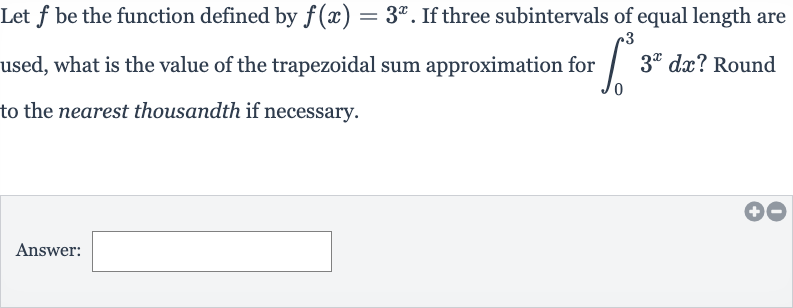Full solution
Q. Let be the function defined by . If three subintervals of equal length are used, what is the value of the trapezoidal sum approximation for ? Round to the nearest thousandth if necessary.Answer:
- Understand trapezoidal rule: Understand the trapezoidal rule and set up the problem.The trapezoidal rule is a numerical method to approximate the definite integral of a function. It works by dividing the interval of integration into smaller subintervals, then approximating the area under the curve for each subinterval by the area of a trapezoid. The formula for the trapezoidal rule with subintervals is:where is the width of each subinterval, and are the endpoints of the subintervals.In this case, we are using three subintervals to approximate the integral from to , so .
- Calculate function values: Calculate the function values at the endpoints of the subintervals.We need to evaluate the function at the endpoints of the subintervals, which are , , , and .
- Apply trapezoidal rule: Apply the trapezoidal rule to approximate the integral.Using the trapezoidal rule formula:
- Round result: Round the result to the nearest thousandth if necessary.Since the result is an integer, there is no need to round it. The value of the trapezoidal sum approximation is .

